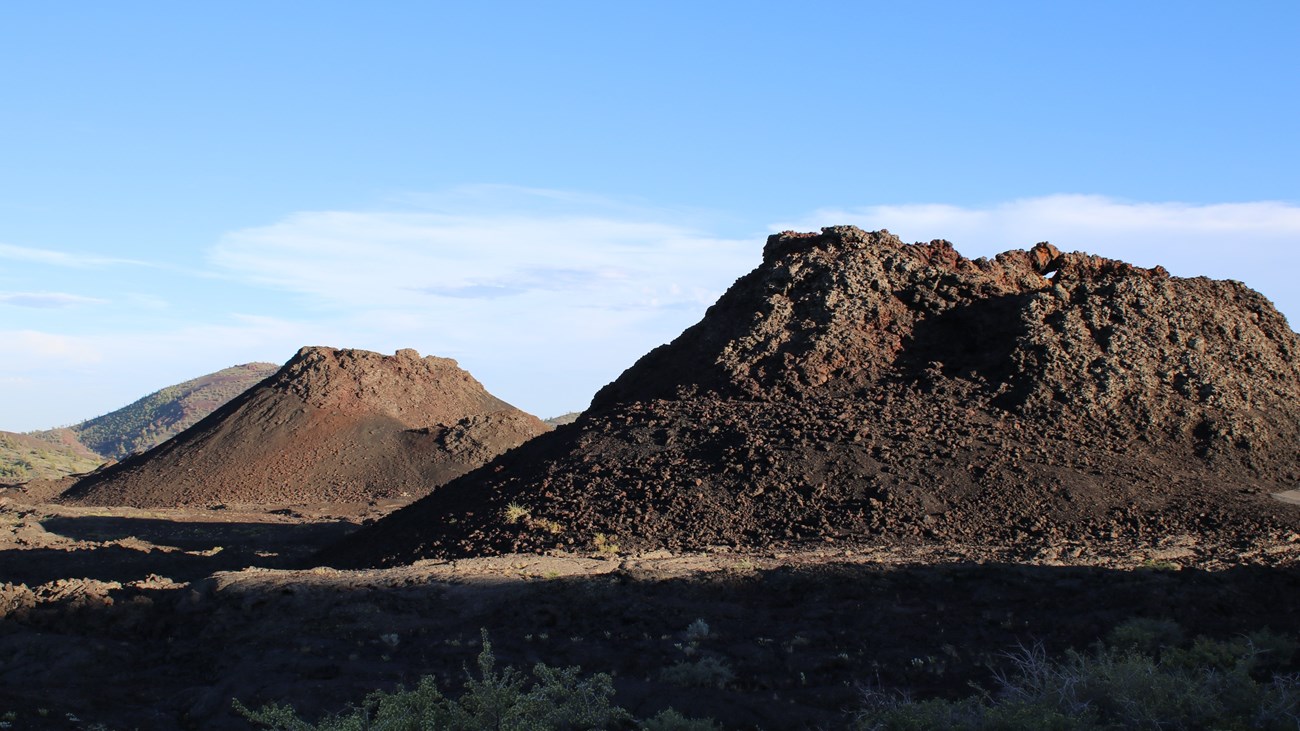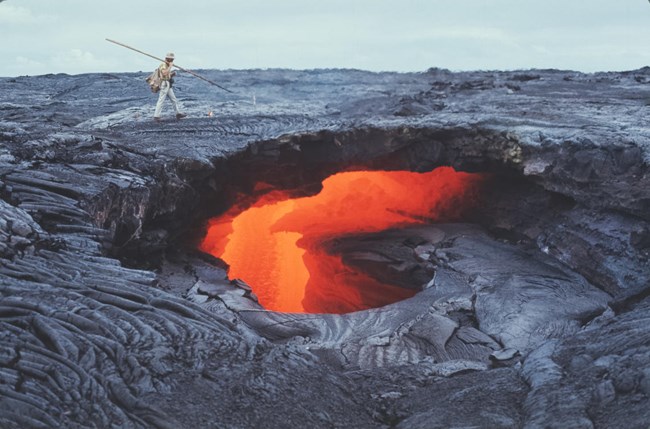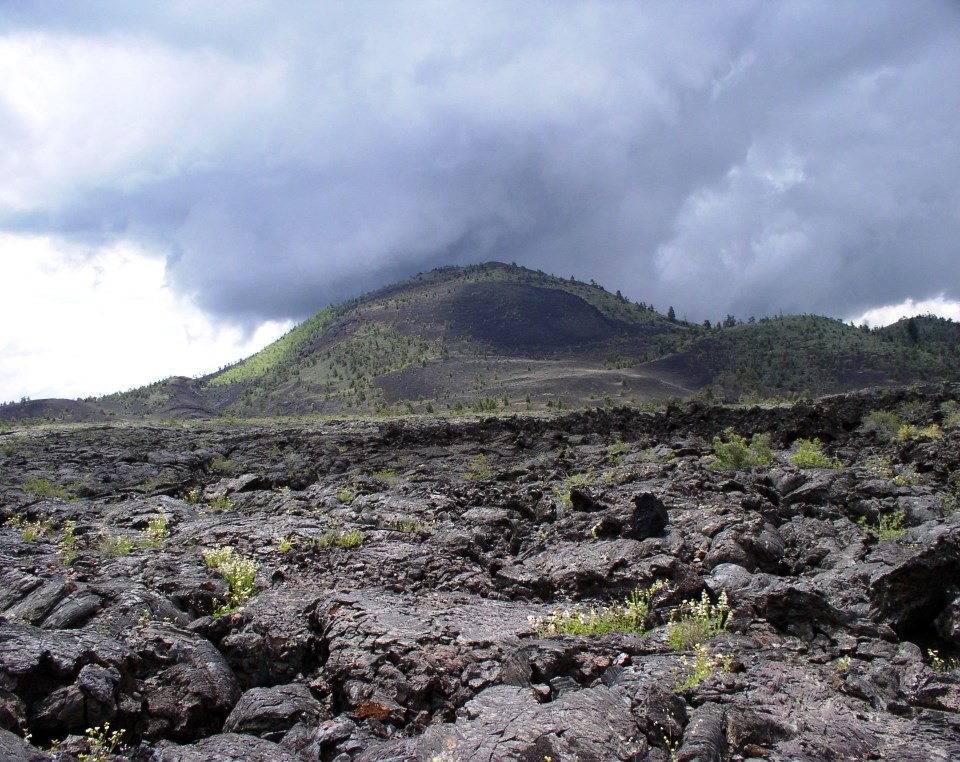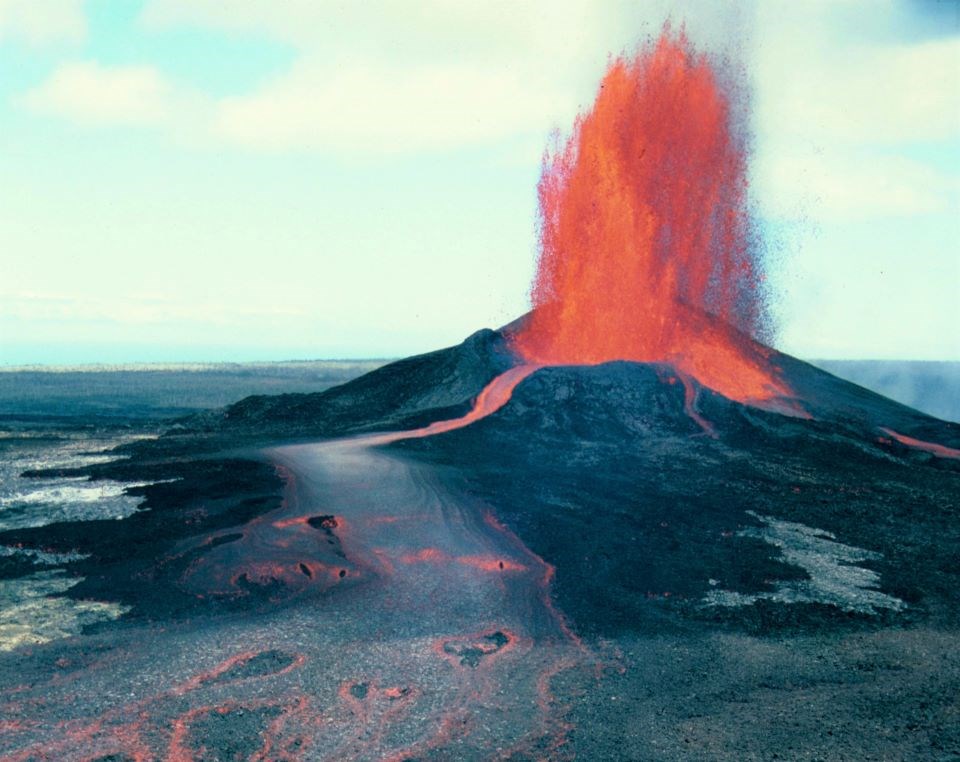
NPS Photo Of the 60 lava flows visible on the surface of the Craters of the Moon Lava Field today, 20 have been dated. The oldest is about 15,000 years old and the youngest about 2,100. Types of LavaSome lava flows were very dense and have a surface of angular blocks referred to as block lava. Others have a rough, jagged, or clinkery surface called a'a lava. Still others have a smooth, ropy, or billowy surface called pahoehoe lava. Three special kinds of pahoehoe may be observed in the Craters of the Moon Lava Field: Slabby pahoehoe is made up of jumbled plates or slabs of broken pahoehoe crust; shelly pahoehoe, which forms from gas-charged lava, contains small open tubes, blisters, and thin crusts; and spiny pahoehoe, which is very thick and pasty, contains elongated gas bubbles on the surface that form spines. The slabby and spiny varieties of pahoehoe are transition phases to a'a. 
USGS Photo Lava FeaturesAs hot lava is injected beneath the surface of cooling lava the surface of the flow may expand or contract. Examples of this behavior are wide spread on the young lava flows of Craters of the Moon. Inside lava tubes, one may observe drips of frozen lava (lava stalactites) and places where different levels of molten lava left behind horizontal lines (lava curbs). Openings into lava tubes were created when hot surface rocks sagged downward creating openings known as hot collapses. After the lava cooled, the roofs of lava tubes may break due to weathering and gravity forming cold collapses. In other places lava flows formed ponds, built levees, and produced lava cascades. Some lava flows produced small mounds (tumuli) or elongated ridges (pressure ridges) on their crusts. In some places, squeeze-ups formed when pressure was sufficient to force molten lava up through tension fractures in the top of pressure ridges or cracks in the solidified crust of lava ponds. Pressure plateaus were produced by the horizontal injections of new lava beneath the crust of an earlier flow that had not completely solidified. Cinder Cones and Spatter ConesWhen magma emerges at the surface along a segment of a rift, it often begins by producing a curtain of fire and a line of low eruptions. As portions of the segment become clogged, the fountains jet higher. If magma emerges at the surface highly charged with gas it sprays high in the air; the fire fountains that produced many of the Craters of the Moon cinder cones were probably over 1,000 feet high. Big Cinder Butte, the tallest cinder cone at Craters of the Moon, is over 700 feet high. The highly gas-charged molten rock cools and solidifies during flight and rains down to form cinder cones. If you look closely at cinders you will see that they are laced with gas holes and resemble a sponge. Cinder Cone Formation 

Left image
Right image
|
Last updated: November 17, 2023
